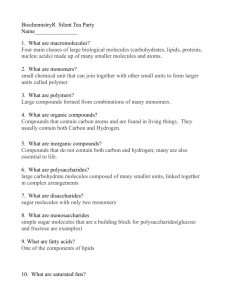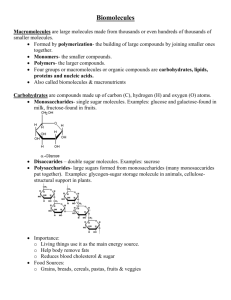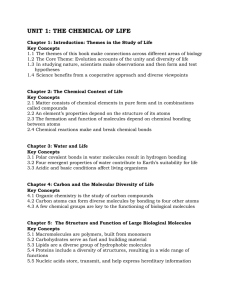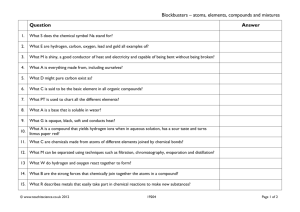Introduction - Cloudfront.net
advertisement
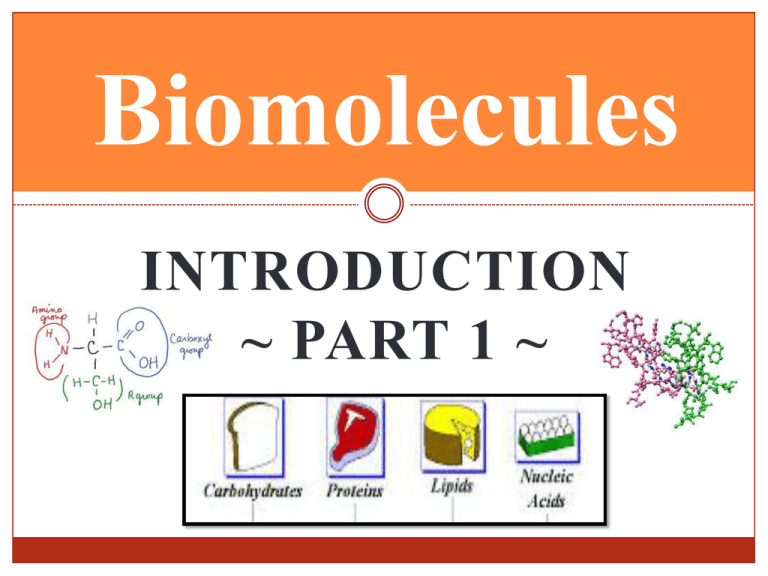
Biomolecules INTRODUCTION ~ PART 1 ~ Chemistry of Life 1. Life requires about 25 of the 92 naturally occurring chemical elements. A. Carbon, oxygen, hydrogen, and nitrogen make up 96% of living matter. B. Phosphorus, sulfur, calcium and potassium make up most of the remaining 4%. Chemical Bonds 1. Atoms combine by chemical bonding to form molecules. A. Atoms react with each other by either sharing or transferring electrons. B. These interactions usually result in atoms staying close together, held by attractions called chemical bonds. Chemical Bonds 1. Covalent bonding: occurs when the outer electrons are shared between two atoms. 2. Hydrogen bonding: a very weak bond between an atom of hydrogen and another atom. 3. Ionic bonding: occurs when the outer electrons are stripped away creating + and – ions. Compounds 1. Compounds = substances that are composed of 2 or more elements combined in a fixed ratio 2. Types of compounds: A. Inorganic compounds B. Organic compounds Compounds 1. Inorganic: does NOT contain carbon A. Example: Water - H2O 2. Organic: Compounds that contain CARBON. A. Example: Glucose –C6H12O6 Carbon (C) 1. Carbon can form covalent bonds with as many as 4 other atoms (elements). 2. Usually with C, H, O or N a. Carbon b. Hydrogen c. Oxygen d. Nitrogen 3. Example: CH4 (methane) Biomolecules 1. Cells are composed of organic compounds called biomolecules 2. These biomolecules include: a. carbohydrates b. lipids c. proteins d. nucleic acids 3. These four types of biomolecules are know as macromolecules 4. These substances are used by your cells and often obtained through foods you eat Macromolecules 1. Macromolecules - Large molecules. Also known as polymers. 2. Polymer - Large molecule made of many subunits (monomers) 3. Monomer - Small molecules (subunits) that make up a polymer (macromolecule). Photo by Toni Lozano Polymer: chain Monomer: link Photo by Toni Lozano In this picture, what would you say is the , and what would be the ? The entire is the , and each is a . Dehydration Synthesis 1. When polymers form (putting monomers together) the process is known as dehydration synthesis. A. an H and OH are given off to form H2O. B. the result is the synthesis (building) of a new polymer. Hydrolysis 1. When polymers break down, the process is known as hydrolysis. A. water is added to the split the molecules. 3. This results in breaking down a polymer into monomers).



